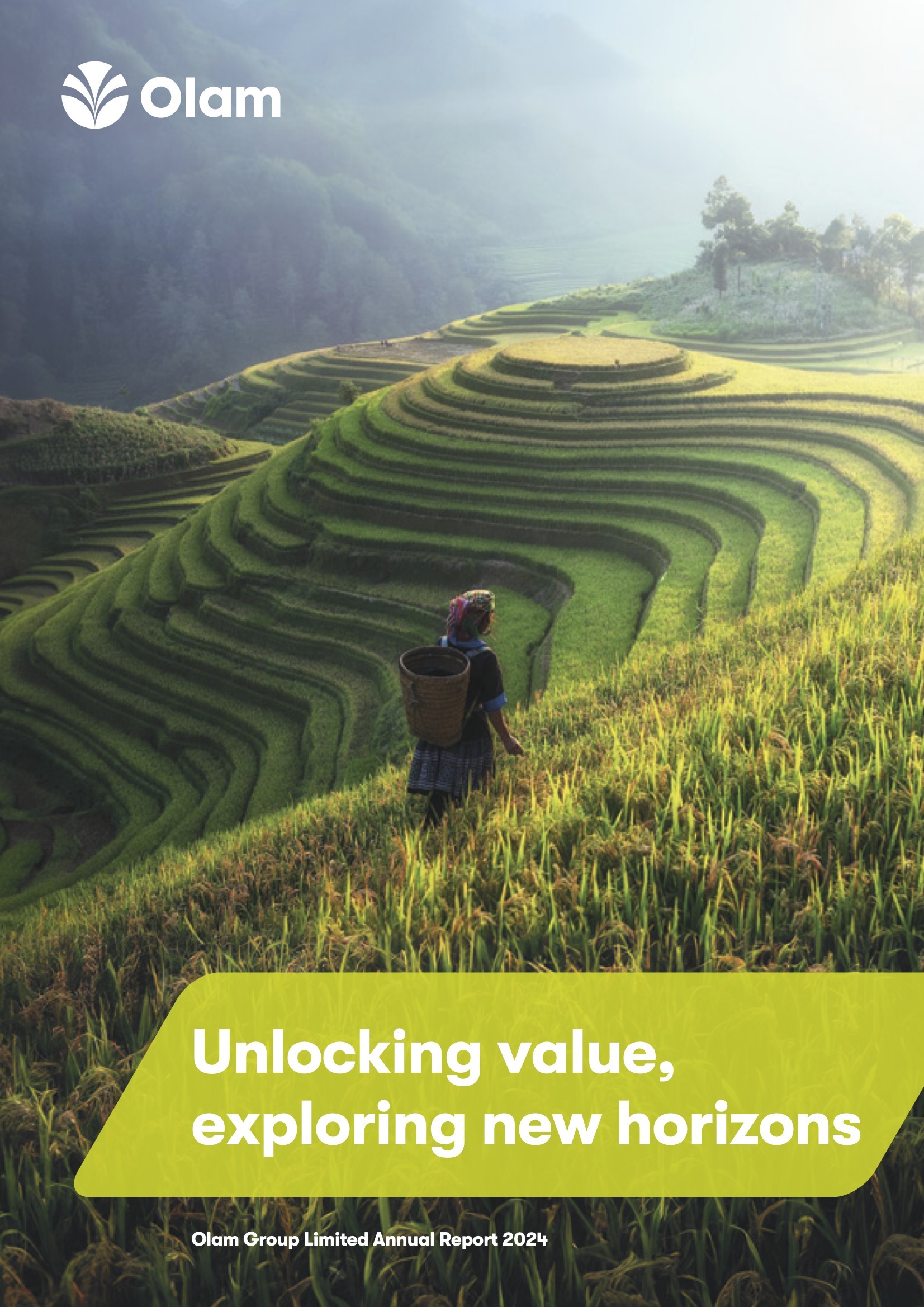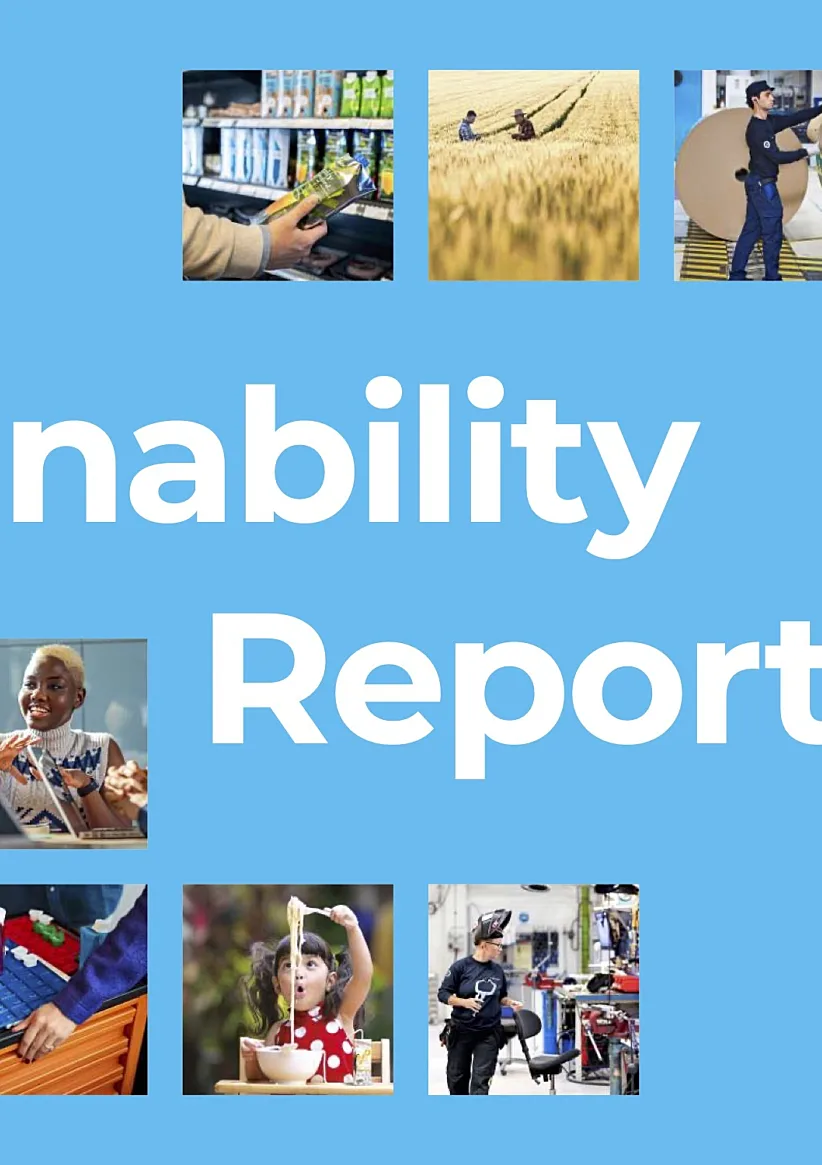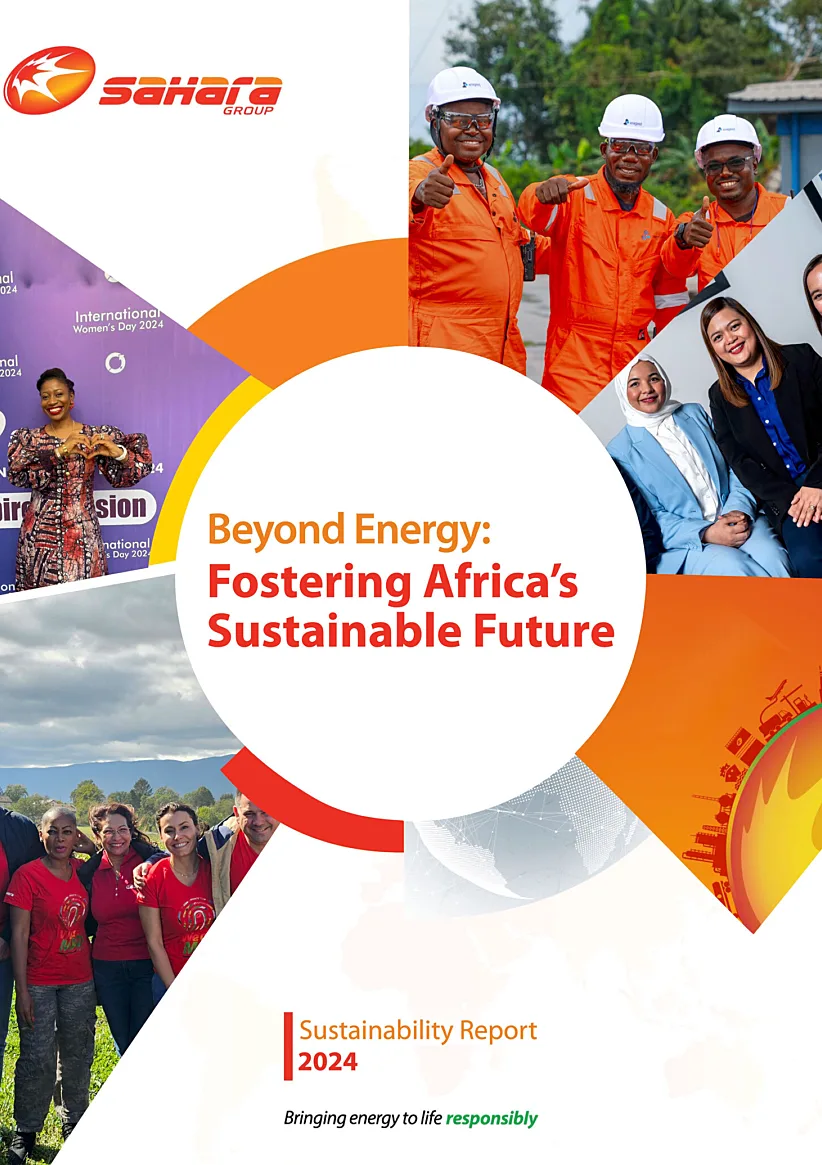Executive Summary
This ESG Tracking Report assesses Olam Group’s 2024 sustainability reporting to provide a structured review of its environmental, social, and governance commitments. The analysis captures how one of Africa’s largest integrated agribusinesses is helping to shape a sustainable future through a multi-pronged approach. Olam’s sustainability strategy—articulated through initiatives like Choices for Change, regenerative agriculture, and traceability platforms—aligns with core SDGs such as Zero Hunger, Climate Action, and Responsible Consumption and Production. Its activities span over 60 countries, with demonstrable impact in Nigeria, Côte d’Ivoire, Ghana, Indonesia, and Brazil.
Key performance metrics include scope 1–3 GHG targets, farmer income uplift goals, human rights remediation efforts, and landscape regeneration benchmarks. Governance structures are clearly defined, with board-level oversight and alignment with global frameworks including TCFD and FTSE4Good Index. Olam integrates digital tools like AtSource and OFIS for traceability and data-backed decision-making.
With ambitious 2030 targets, Olam continues to embed ESG into operations, supply chains, and investment decisions. However, further efforts are needed to harmonize disclosures and enhance quantification of supply chain risks.
Olam’s sustainability strategy aligns with the UN definition of sustainable development: “meeting the needs of the present without compromising the ability of future generations to meet their own needs.”
1. SDG Alignment
- Key SDGs:
- SDG 2: Zero Hunger
- SDG 13: Climate Action
- SDG 12: Responsible Consumption and Production
- SDG 15: Life on Land
- SDG 8: Decent Work and Economic Growth
- Implementation:
- Choices for Change, ofi’s overarching strategy, aims to uplift 1 million smallholder households and ensure living income for 200,000 by 2030.
- Programs include nutrition initiatives (e.g. IMSA in Côte d’Ivoire), regenerative agriculture pilots (SALT in Indonesia), and farm-to-factory traceability.
- Geographic Footprint:
- Active across Africa (Nigeria, Ghana, Côte d’Ivoire, Mozambique), Asia (Indonesia, India), and Latin America (Brazil).
- Future plans target 100% alignment of SDG-linked outcomes across global operations using digital traceability tools.
2. ESG Management
- Governance Structure:
- Dedicated Sustainability Committees and working groups across operating units.
- ESG performance is reported to the Olam Board and embedded in leadership KPIs.
- Frameworks Used:
- Adheres to FTSE4Good Index, CDP (rates ‘B’ on Climate and Water), and uses TCFD for climate risk disclosures.
- Sustainability data is tracked with AtSource and OFIS (Olam Farmer Information System).
3. Initial Areas of Impact
- Core Impact Areas:
- Climate-smart agriculture (soybean processing in Nigeria, regenerative farming in Indonesia)
- Nutrition access via fortification efforts (Africa)
- Human rights monitoring (child labour mitigation in cocoa)
- Pilot Projects:
- Sloping Agricultural Land Technology (SALT) with GIZ and Mars
- Infant Malnutrition System Alert (IMSA) smartphone tool
4. Metrics for Definition
- 2 million hectares under regenerative agriculture (target by 2030)
- 30% Scope 3 GHG reduction; >50% Scope 1 & 2 reduction by 2030
- 1 million households with improved livelihoods
- 100% human rights cases with remediation
- 750,000 households accessing improved nutrition/health support
- 90% traceability achieved across directly sourced volumes
5. Areas of Focus
- Expansion of pasta, rice, feed, and dairy across Africa
- Enhanced traceability in wood, cocoa, rubber supply chains
- Broader integration of EU Deforestation Regulation compliance
- Further development of AtSource for longitudinal tracking
6. Materiality Concepts
- Based on a double materiality assessment identifying climate, biodiversity, traceability, and human rights as priority areas.
- The strategy (Choices for Change) reflects these pillars with detailed action plans and handbooks to guide field-level execution.
7. Sustainability Risk Management Concepts
- Sustainability risks embedded in core enterprise risk dashboards
- Deforestation, climate change, biodiversity loss, and supply volatility are top risks
- Mitigation includes digital traceability (Track & Trace, OFIS), farmer livelihoods (LIGHT Tool), and safe working campaigns
8. Sustainability Strategy Concepts and Management
- Strategy Defined by:
- Choices for Change, launched in 2024, with four pillars: Thriving Communities, Prosperous Farmers, Climate Action, and Regenerating the Living World
- Supported by Supply Chain Excellence backbone
- Management Approach:
- Goals driven by:
- Annual milestones and KPIs
- Stakeholder and regulatory engagement (e.g. GIZ, EU Green Deal)
- Internal sustainability handbooks and digital training tools
- Integration into operational workflows and investment decisions
- Goals driven by:
The full implementation path presents a structured and data-driven approach, aligning strategic priorities to operational execution and sustainability disclosures.





